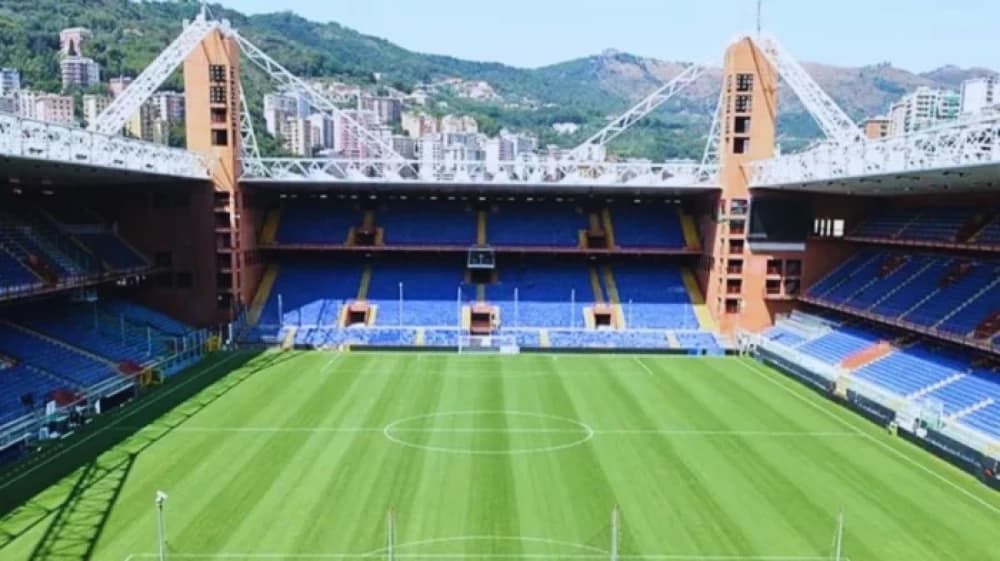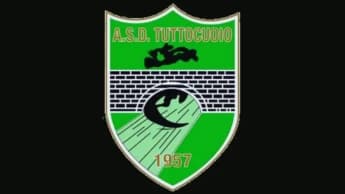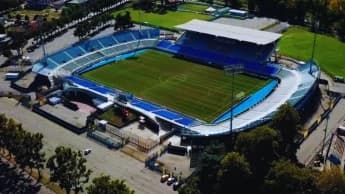
The Heartbeat of Genoese Football – Where Tradition Meets Intensity
Overview
The Stadio Comunale Luigi Ferraris, affectionately known as Marassi, is one of Italy’s most historic and iconic football stadiums. Located in the Marassi district of Genoa, it has been the home of both Genoa C.F.C. and U.C. Sampdoria since its inauguration in 1911. As the oldest stadium still in use for football in Italy, Marassi has witnessed over a century of unforgettable moments, from domestic triumphs to international spectacles. With its unique architecture, passionate fanbase, and rich history, the Stadio Luigi Ferraris remains a symbol of footballing tradition and pride in Genoa.
History: A Legacy of Football and Resilience
Inception and Early Years
The Stadio Luigi Ferraris was inaugurated on January 22, 1911, as the home ground of Genoa C.F.C., one of Italy’s oldest and most storied football clubs. Named in honor of Luigi Ferraris, a Genoa player, engineer, and World War I hero, the stadium quickly became a focal point for football in the region. Initially designed as a multi-purpose venue, it hosted football matches, athletics events, and other sporting competitions.
The Birth of a Rivalry
In 1946, U.C. Sampdoria was formed through the merger of two Genoese clubs, Sampierdarenese and Andrea Doria. Sampdoria soon joined Genoa as co-tenants of the Stadio Luigi Ferraris, sparking one of Italy’s most intense rivalries, the Derby della Lanterna. This rivalry has defined the stadium’s atmosphere, with matches between the two clubs drawing passionate crowds and creating unforgettable moments.
Renovations and Modernization
In preparation for the 1990 FIFA World Cup, the stadium underwent a major renovation led by renowned architect Renzo Piano. The running track was removed, and the stands were brought closer to the pitch, creating a more intimate and intense atmosphere. The capacity was increased to approximately 36,000 seats, and the stadium’s distinctive steel towers and industrial aesthetic were introduced. These changes modernized the venue while preserving its historic charm.
Architectural and Design Features
Unique Structure
The Stadio Luigi Ferraris is renowned for its compact, rectangular design and steeply banked stands, which bring fans close to the action. The stadium’s four main stands—Tribuna, Gradinata Nord, Gradinata Sud, and Distinti—each have their own character, with the Gradinata Nord and Gradinata Sud serving as the strongholds of Genoa and Sampdoria’s most passionate supporters, respectively.
Iconic Towers and Roof
One of the stadium’s most striking features is its four steel towers, which support the roof structure. These towers, connected by steel cables, give the stadium a distinctive industrial look while ensuring unobstructed views for spectators. The roof provides cover for fans while maintaining an open-air feel, enhancing the matchday experience.
Atmosphere and Acoustics
The stadium’s design amplifies the noise generated by fans, creating an intimidating environment for visiting teams. The close proximity of the stands to the pitch ensures that chants, songs, and celebrations resonate powerfully, making Marassi one of the most atmospheric stadiums in Italian football.
Notable Events and Moments
1990 FIFA World Cup
The Stadio Luigi Ferraris hosted four matches during the 1990 FIFA World Cup, including the dramatic Round of 16 clash between the Republic of Ireland and Romania. The match ended in a penalty shootout, with Ireland emerging victorious in one of the tournament’s most memorable moments.
Sampdoria’s Golden Era
The late 1980s and early 1990s marked Sampdoria’s golden era, with the club winning its first and only Serie A title in the 1990–91 season. The stadium was the backdrop for many of the team’s historic victories, including their run to the 1992 European Cup final.
Genoa’s Resurgence
In the 2008–09 season, Genoa finished fifth in Serie A, securing qualification for the UEFA Europa League. The team’s performances at Marassi, including victories over traditional powerhouses like Juventus and Inter, marked a resurgence for the club and reignited the passion of its supporters.
Derby della Lanterna
The Derby della Lanterna, the fierce rivalry between Genoa and Sampdoria, has produced some of the most intense and memorable matches in Italian football. Each derby at Marassi is a spectacle of noise, color, and emotion, with fans creating an electric atmosphere that underscores the significance of the fixture.
Fanbase and Community
Passionate Supporters
The Stadio Luigi Ferraris is known for its passionate and loyal fanbase. Genoa and Sampdoria supporters fill the stands with chants, banners, and choreographed displays, creating an unforgettable matchday experience. The stadium’s intimate design ensures that the energy of the crowd is felt by players and fans alike.
Cultural Significance
Marassi is more than just a football stadium; it is a symbol of Genoese identity and pride. The stadium’s deep-rooted connection to the city and its footballing traditions has made it a cherished landmark for generations of supporters.
Community Engagement
Both Genoa and Sampdoria are deeply involved in the local community, organizing events, initiatives, and programs that promote grassroots football and social inclusion. The stadium serves as a hub for these activities, reinforcing its role as a center of footballing culture in Genoa.
Records and Legacy
Historic Achievements
-
Genoa C.F.C.: Nine Serie A titles (mostly pre-stadium era) and a rich history of domestic and European competitions.
-
U.C. Sampdoria: Serie A title (1990–91), European Cup final (1992), and multiple Coppa Italia victories.
-
International Matches: Hosted the Italian national team and key fixtures during the 1990 FIFA World Cup.
Individual Legends
The stadium has been graced by legendary players such as Gianluca Vialli, Roberto Mancini, and Diego Milito, who have left an indelible mark on its history.
Enduring Legacy
As the oldest stadium still in use for football in Italy, the Stadio Luigi Ferraris stands as a testament to over a century of footballing history. Its unique architecture, passionate atmosphere, and rich traditions ensure that it remains one of Italy’s most iconic sporting venues.
Future Prospects
Modernization and Preservation
While discussions about potential renovations or a new stadium have surfaced, the emotional connection fans have with Marassi ensures that it will remain a central part of Genoese football culture. Any future changes will aim to modernize the venue while preserving its historic charm and atmosphere.
Continuing the Legacy
As Genoa and Sampdoria continue to compete in Serie A, the Stadio Luigi Ferraris will remain a fortress for both clubs. Its legacy as a symbol of passion, tradition, and footballing excellence will endure, inspiring future generations of players and fans.
Conclusion
The Stadio Comunale Luigi Ferraris is more than just a football stadium; it is a living monument to the history, culture, and passion of Genoese football. From its early days as a multi-purpose venue to its current status as one of Italy’s most iconic sporting arenas, Marassi has witnessed countless unforgettable moments. As the home of Genoa C.F.C. and U.C. Sampdoria, it continues to be a place where tradition meets intensity, ensuring its place in the hearts of football fans for generations to come.





